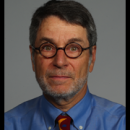Hersh: A heads-up (and shout out) to cyclists
- Share via
This article was originally on a blog post platform and may be missing photos, graphics or links. See About archive blog posts.
When persistent foot injuries made me replace running with road cycling as the primary part of my fitness efforts exactly a year ago, I quickly learned from a friend there are two kinds of cyclists:
1) Those who have crashed.
2) Those who are going to crash.
Until Saturday, when I was four miles from the end of my longest ride ever, a 77-miler with a wonderfully welcoming Chicago suburban riding group called Team Judson, I had been a No. 1.
Now that I am a No. 2, I have learned two things from the experience of having gone down at 10 mph when too many stimuli (golfers crossing the street, wet and badly potholed pavement, cars next to me) created enough steering indecision I hit a curb, lost control and tumbled to my left.
1) Anyone who rides without a helmet is a fool.
2) I can’t imagine how tough professional cyclists must be to get up and keep going -- sometimes for days and days -- after the much more serious crashes many get involved in.
I mean, Tyler Hamilton may be a banned doper, but the guy rode the entire 2003 Tour de France after breaking his collarbone on the first stage. That is about 2,400 miles with a broken bone and other complications from the crash, including a pinched nerve in his neck.
And seven-time Tour winner Lance Armstrong, doping allegations and all, began his final Tour in 2005 two weeks after suffering a black eye and cuts on his forehead, arms and knees after he flew over the handlebars when he lost control in a training ride. His helmet split in two.
And those are just two examples.
I am struck by Hamilton’s and Armstrong’s will (and pain threshhold) because my ribs are sore as heck after going down, and I can’t imagine being back on a bicycle for a while, no matter how many pain-killers I might take or how much I was being paid to ride.
And, although I vowed a couple of years ago not to write about elite road cycling until the sport goes two years without a major drug scandal (that clock sadly reset again this year with the Tour of Italy mess), my brief experiences on a bike leave me even more in awe of what top cyclists do -- in terms of coping with weather, descents at frightening speeds, constant injuries and ability to handle a bike. (Who can forget Armstrong not losing control as he raced downhill across a grassy field to avoid hitting a rider who had fallen in front of him?)
But let’s go back to the helmet thing.
The first part of me that hit the ground when I fell was the left side of my head.
It was protected by a helmet that cracked in two places.
I wasn’t the slightest bit dizzy after getting up and was able to ride the rest of the way home. As soon as I cleaned up the cuts on my shin, arm and shoulder, I followed the advice of the same experienced cyclist who had told me about the crash classification and went to Evanston’s Pony Shop to buy a new helmet because they are designed to take one impact.
My helmet had two cracks.
Wearing it may have been the reason I could see the damage clearly.
-- Philip Hersh
